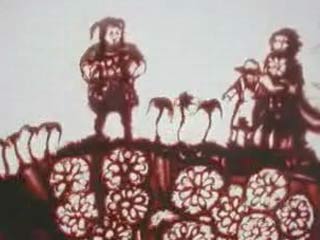Description
This richly animated clip features the unscripted voices of a group of 5-9-year-old children discussing the concepts of mortality, of death itself and the cycle of life by referring to their own experiences and the natural world. A number of different styles of animation - pencil and pen drawing, pastels and sand animation - together with a soundtrack containing sound effects to support the animation, illustrate, reinforce and expand on the children's comments.
Educational value
- The children's discussion of challenging philosophical questions, including a consideration of the origins of life, evolution, death, dying and regeneration, demonstrates their capacity for rich complex thinking. They use examples from their own experience such as pimples and drooping flowers to explore and explain complex ideas. They use analogies. Death is 'just another word for "gone away"', says one of the children, comparing death to a father going away on a ship.
- The technique of sand animation is used to illustrate and support some of the audio content of the film. The method involves animators creating images using sand and moving it with tools or fingers on a backlit piece of glass to create each frame of the film. This form of animation supports the theme of metamorphosis and the cycle of life, with each image transforming into the next to show the process of growth, decay and rebirth.
- This edited conversation and exploration of ideas by gifted and talented children especially selected for this program provides a model for how a philosophical discussion might proceed. Undaunted by the complexity of the subject and, despite at times having very different opinions, they are able to listen to each other's points of view, disagree appropriately, explain their own ideas with clarity and confidence and build on the ideas of others.
- Explanations of death are sought for and explored in the clip. The fact that everything has to die and that death is part of the cycle of life is acknowledged but the concept of continuity even after death is expressed, as in 'he's still there in your heart'. Images of the reflection of a face in a pool of water further develop this idea. One child refuses to accept the idea of continuity. 'It's just dead. That's what I think', he says.
- The clip demonstrates the importance of a soundtrack in supporting visual material and creating meaning. Carefully selected sound effects work together with the images in the animation to reinforce the philosophical concepts being explored. The sounds of nature such as the wind blowing leaves off the trees, the sound of a crow and bees buzzing, a crack of thunder and noise of fire support and dramatise the discussion concerning death and regeneration.
- The children whose voices are heard were chosen from schools in which philosophy is taught and students are encouraged from a young age to interact with each other within a 'community of enquiry'. Discussion was facilitated by an expert educator who encouraged the children to explore the topic freely. Discussions were then edited and the recordings given to an animator for visual interpretation.

